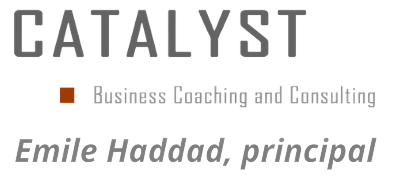 Many articles and blogs on leadership effectiveness tend to offer a series of action steps that describe best practices for leadership and decision making. Here is an example of such a list I read recently:
Many articles and blogs on leadership effectiveness tend to offer a series of action steps that describe best practices for leadership and decision making. Here is an example of such a list I read recently:
- Define desired outcomes
- Identify potential obstacles to those outcomes
- Design and implement right solutions.
Though such a list is perfectly accurate and useful in the broadest sense, like many others similar to it, it does not guide the reader before engaging each of these steps, or any other similarly broad steps, towards two very important underlying questions; the questions of “WHY” and “HOW.” Why have I identified certain outcomes as the desired ones? How did I select those outcomes over others that are available? The same two questions can be asked of the other two points, the obstacles standing in the way as well as the solutions.
The reality is that most of us typically ask the WHY and HOW questions, but we do it internally and unconsciously … and so very fast, drawing quick conclusions that are based on a host of assumptions which may or may not be true. In the demanding fast paced business world, most leaders do not slow down to examine these questions for themselves, or better yet, externalize them with their team; they typically do not share their internal process, but rather only share their final conclusions without seeking the necessary external testing and validation that is born from engaging the whole team with these questions.
So why do many leaders skip engaging their teams in these most crucial and fundamental questions?
Typically I find that those who are confident in the strength of their leadership tend to be more willing to question their own conclusions before they make the final decisions. In effect, they will purposefully slow down to ask themselves the WHY and HOW questions, and in the same spirit of curiosity, tend to expect that of their teams.
Leaders that do ask such questions of themselves and their teams tend to be more effective in creating influence and buy-in. They are leaders that have recognized the importance of developing their own emotional intelligence and with it naturally the inner observer (read previous blog “Leadership & the Inner Observer”), and they will drive their teams to develop those same skills. It is the inner observer in us that tends to drive us to curiosity of what we and others are thinking or experiencing. An emotionally intelligent leader tends to be a curious one, and a curios leader tends to inquire, and frequently so, before they make their decisions.
If a leader is looking to determine outcomes, obstacles, solutions or anything else within their realm of decision making, then having a healthy sense of curiosity about their own assumptions and about what others think, as well as skillful inquiry habits, would go a long way to harness the collective intelligence of the whole team, generate collaboration, build buy-in and create influence.

